Planting and caring for hyacinths outdoors
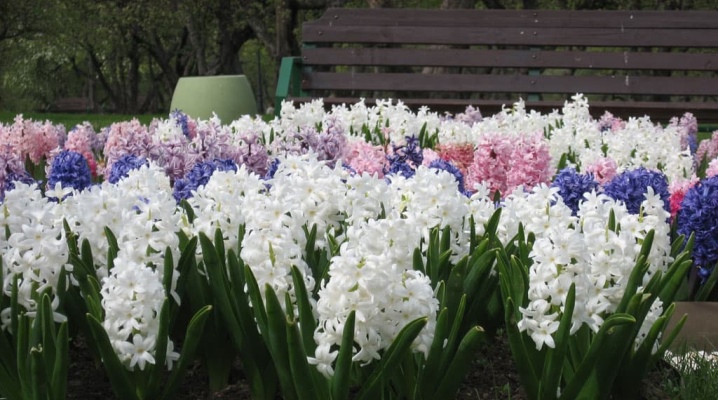
Spring, a wonderful holiday for all women, is already behind us, and on the windowsill there is a wonderful hyacinth recently donated. Soon it will wither, leaving behind only a small onion in a pot. What to do? You should not make hasty decisions and throw away the flower, because it can please you with lush flowering not only next year, but also for many years. One such gift can give life to an entire flower bed! Let's take a closer look at how to grow hyacinth from a pot, how to plant and care for a plant, how to choose planting material.
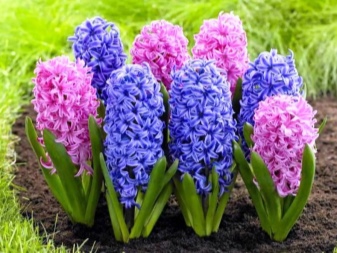
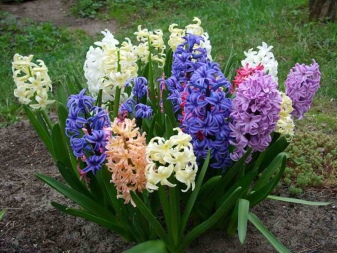
Peculiarities
Hyacinths are spring perennial herbaceous plants belonging to the Asparagus family, although they were previously classified as Liliaceae, and before that they were even singled out into a separate family.... In the 16th century, they were brought from Asia Minor to northern Italy, where they began to be grown as decoration for the gardens of aristocrats and wealthy people. In the 18th century, Dutch breeders, fascinated by the wondrous aroma and bright flowering, began to seriously breed new varieties of this flower, and the country itself received the title of "hyacinth center". This is how lilac, pink, white, blue, yellow and even black flowers appeared. Wild hyacinths still grow freely in meadows and mountain slopes in Mediterranean countries and southern Asia.
This flower got its name in honor of the mythical youth from Ancient Greece, the son of the king of Sparta named Hyacinth. He was extraordinarily handsome and intelligent. The god Apollo was friends with the young man and often came down from heaven to teach him how to throw discs. One day the prince wanted to return his disk to Apollo, but the wind god, who was in love with Hyacinth, killed the young guy out of jealousy.
The grief-stricken god of light created a beautiful flower from the blood of the deceased young man, immortalizing the name of his faithful friend.
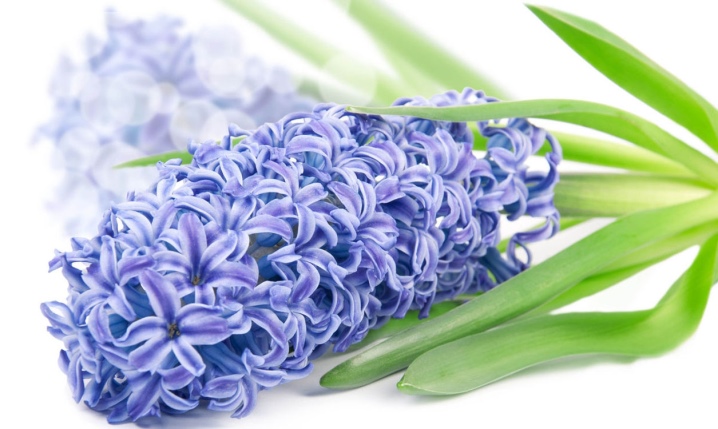
The plant is formed by a multilayer spherical bulb, consisting of many juicy scales, under which dense glossy leaves originate. Ideally, the leaves are vertical and surround the peduncle symmetrically. In early spring, an arrow begins to appear from the tuber, from which a stem grows about 15–40 cm in height and 5 mm in diameter. At its top, an inflorescence-brush of 20–35 brightly colored buds is formed. Flowering pleases owners of hyacinths for about 2 weeks. After flowering, the once juicy leaves and stem dry up at the hyacinth, and a bud is formed at the edge of the upper leaf plate, which will bloom next year. The plant is considered an adult only by the age of 4–6, when it begins to bloom.
Flowers up to 2 cm long can be funnel-shaped, tubular or bell-shaped with bent edges of the petals. They are regular and terry, and also always have a very rich pleasant aroma. The plant has a three-celled fruit, each nest contains 2 seeds. Some scientists believe that the genus of hyacinths has more than 30 separate species, another part emphasizes that there is only one species, which forms many varieties. By color, they are classified into several groups.
- Blue hyacinths include varieties such as:
- late blooming Perle brillante with a pale blue color;
- medium grade Queen f the blues with blue flowers, exuding a weaker aroma;
- early flowering Marie with dark blue buds painted with a longitudinal lilac stripe.

- Lilac hyacinths include the following varieties:
- Indig King (late) - glossy dark purple inflorescences;
- Blue Magic (medium) with purple-purple flowers;
- Bismarck (early) with light purple buds, which are decorated with a rich lilac longitudinal strip on the petals.
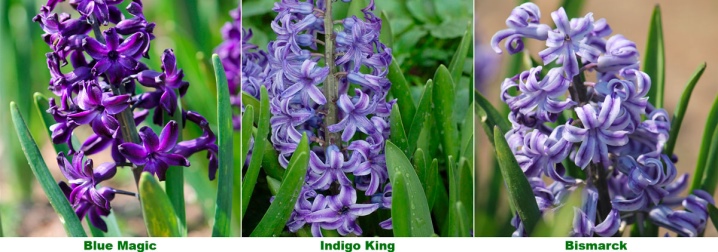
- Pink hyacinths include varieties such as:
- Gertruda (late) and her dark pink buds;
- Anna Marie (medium) with a light pink color;
- Mreno (early) in a raspberry-pink color and a darker longitudinal stripe on the petals.
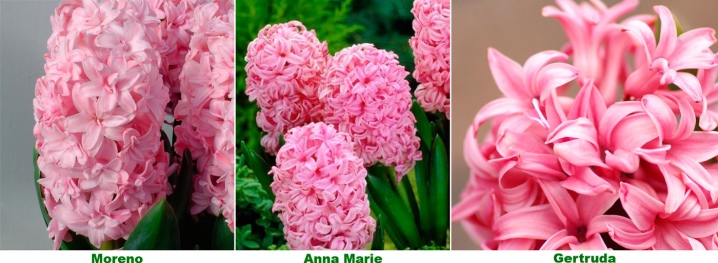
- Red hyacinths include the following varieties:
- late blooming Hllyhock with double crimson-red flowers;
- Tubcrgen's Scarlet - medium grade with deep red color;
- early flowering La Victire with glossy pinkish-red petals.
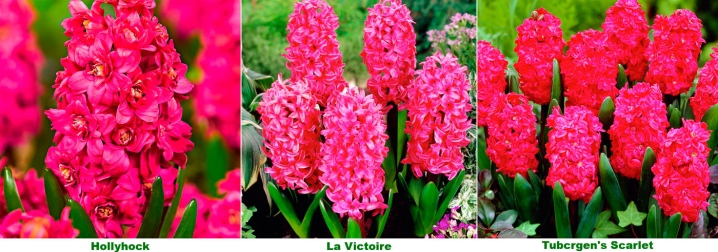
- White hyacinths include the following varieties:
- terry late Snw crystal and middle Madame Sophie;
- creamy early flowering Arentine Arendsen.
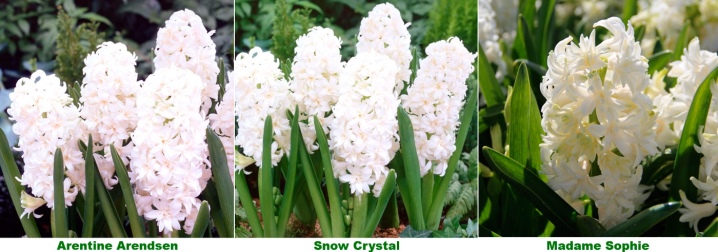
- Yellow and orange hyacinths include varieties such as:
- medium grade Yellw hammer with rich yellow petals that fade by the end of flowering;
- Oranje Bven with apricot-salmon flowers and a dark pink border;
- late blooming City f Haarlem with yellow flowers that turn cream over time.

Important! The earliest and longest-flowering varieties are considered blue, then white with pink, red and lilac bloom.
Many varieties of hyacinths have been bred, which differ in stem length, flowering time and other features. Amethyst hyacinth is an unpretentious plant that is suitable for beginner gardeners who want to decorate their small area with bright flowers. The most common variety for planting is oriental, which includes red, pink, white and blue shades of inflorescences, well suited for decorating any type of landscape.
It is important to remember that all the constituent parts of hyacinth contain a poisonous alkaloid. Its use in any form can cause gastrointestinal upset, symptoms of which may include nausea, vomiting, diarrhea, and others. In case of accidental ingestion of an alkaloid inside, an urgent need to consult a doctor.
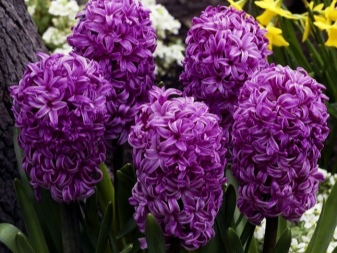
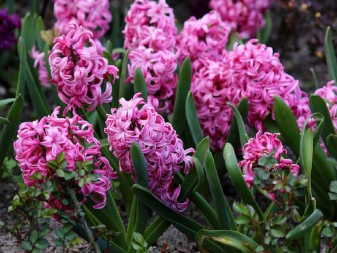
The choice of planting material
You don't have to be a professional gardener to choose the right planting material. If you have no bulb left from the hyacinth given to you, then do not despair, but go to the market or to the store, where you choose the future plant yourself. A good bulb for planting amethyst or oriental hyacinth should have the following characteristics:
- correct spherical shape and has a prominent neck;
- medium-sized ("flowerbed") - about 4-6 cm in diameter;
- you should not choose an onion that has dried from the inside (it will be lighter in comparison with a healthy one), it should be elastic and weighty;
- consists of 7-10 dense and juicy inner scales and several outer thin and dry;
- bulbs of the same class must be the same color, size and shape;
- they must be free of mechanical damage, mold, diaper rash or loose areas;
- at the bottom there are millimeter root rudiments;
- the bottom volume is one and a half or two times less than the bulb itself.
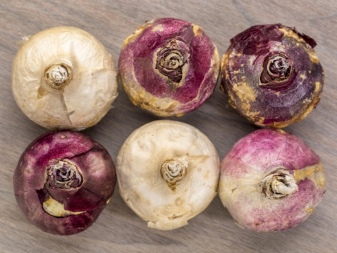
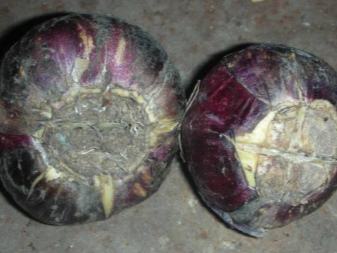
Terry tubers and yellow hyacinth varieties are smaller.
If the purchased bulbs are in a sealed package, then it is necessary to remove them as soon as possible and place them in a paper bag or box.
When and how to plant correctly?
To maintain a lush and long-lasting flowering, the bulbs must be dug up for the summer every year, and planted again in the fall. It is worth adhering to the rules for planting hyacinth bulbs in open ground.
- When. So that the plant does not grow too early and does not freeze, in the regions of the Moscow region, in the Urals and in other not very cold regions, it is planted in the last days of September - early October. In Siberia, planting is carried out in early September.
- Choosing a place. A calm, well-lit place, away from bushes and trees so that they do not pick up moisture and nutrients.
- Preparation. When the leaves and peduncles begin to turn yellow and wither, you can dig up the bulb. The removed bulbs are soaked for 10 minutes in a thermos with water + 50 ° C, and then dried, freed from dry scales and children, removed the planting material in a ventilated place, stored in boxes in one layer or in paper bags.The first 2 months they are kept at a temperature of + 25 ° С, and in the third month the storage temperature is reduced to + 18– + 20 ° С. At the end of August, you need to loosen and fertilize the land. Soak the bulb in the fungicide solution for 30 minutes before planting.
- Priming. It should be loose, well-drained, preferably mixed with peat or river sand. The acidity of the soil must be at least 6.5.
- Humidity. It is better to place it on a slide or knoll to ensure the outflow of melt and rainwater.
- How to plant. We dig a hole with a spatula with a depth of 3 diameters of the bulb, the bottom is made with a 3-4 cm layer of sand (if the soil was not fertilized before, then the sand is mixed with humus), after which the bulb is placed with the bottom down, pressing a little into the sand, then covered with sand to the top, and the remaining space is filled with soil. This is the so-called "sand jacket" method, which avoids stagnant water and rotting of the bulb. If the soil is dry, it should be watered after planting. The distance between holes in a row should be about 15-20 cm, and between rows - about 20-30 cm.
For the winter, the planting sites are mulched with peat, sawdust or foliage, and in early spring the mulch is removed.
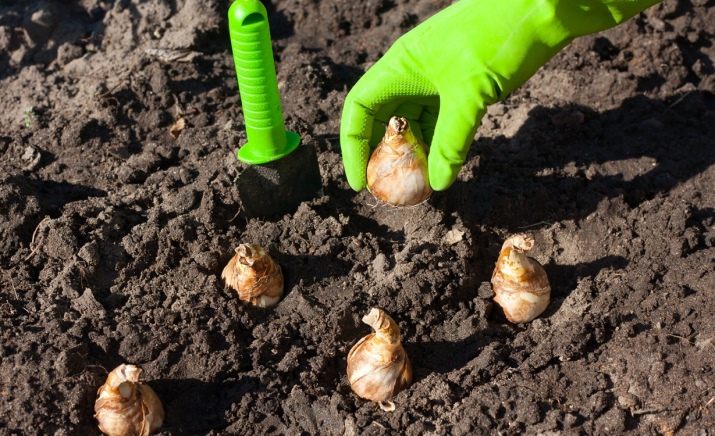

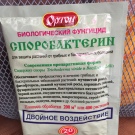
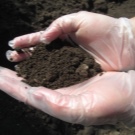
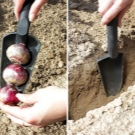
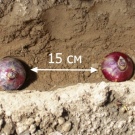
How to care?
Hyacinths are capricious and whimsical plants, therefore the rules of caring for them must be strictly observed.
Watering
You should not just water the flowers, only during an abnormal drought, because in spring the earth is wet from melt water. If there is such a need, then you need to water so that 15–20 cm of soil gets wet. Several times per season, the soil needs to be loosened a few centimeters. It is imperative to ensure that the hyacinths are not overgrown with weeds, so weed should be constantly and timely.

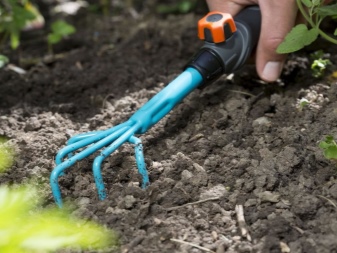
Top dressing
To grow a healthy and vibrant flower, you need to fertilize it well. Top dressing is done 3 times per season, namely:
- as soon as the first shoots have appeared, 15–20 g of superphosphate and 20–25 g of ammonium nitrate are added to the soil per 1 m²;
- as soon as buds begin to form, add 30–35 g of superphosphate and 15–20 g of potassium sulfate or potassium chloride per 1 m²;
- as soon as the plant finishes blooming - 30–35 g of superphosphate and potassium sulfate per 1 m².
Fertilizers are introduced dry, simply scattering on the ground, or in the form of a solution, diluting nutrients with water. When making a solution, the dose of each fertilizer per 1 m² is reduced by 5 g. Top dressing is introduced into the aisles or between flowers, covering it by 10-15 cm, and then watered the ground.
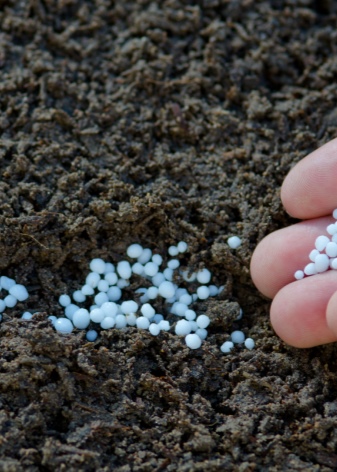
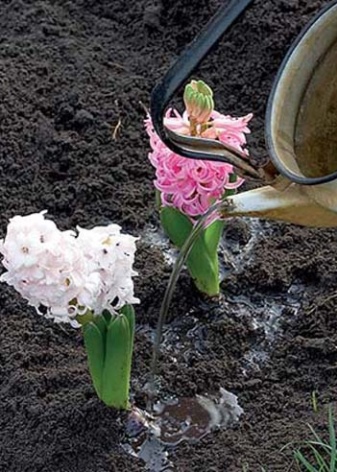
Reproduction
After the hyacinth has pleased its owner with flowering, you should not discount it, because even from a donated potted plant, you can grow several dozen new flowers. These plants propagate by children or seeds, but it is also possible to grow new bulbs from leaves and scales. Let's consider each method separately.
Seeds
Growing hyacinths from seeds is a long process. Seeds are sown in a box with soil mixed with humus, sand and leafy soil. After that, the boxes are placed in a cold greenhouse and flowers are grown for 1.5–2 years, after which the grown bulbs can be planted in open ground. When sowing seeds in open ground, hyacinth blooms only after 7–8 years.
With this method of propagation, the plant does not retain the varietal characteristics of the parent flower, therefore this method is more often used for breeding new varieties.
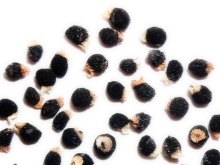
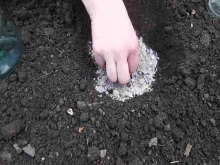
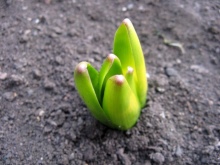
Children
Raising babies is the most common method. Without any manipulations, from 1 to 3 children can form under the scales in a year and, if they are well separated, then they can be planted in the ground and grown. Experienced gardeners take an already adult onion and, with a cunning device - a sterile teaspoon with a pointed end - make a cruciform incision or completely cut out the bottom and bases of the leaves.After that, the cut of the tuber is treated with a fungicide or crushed activated carbon, and then the bulb is placed upside down in a box with sand and kept at a temperature of + 20– + 22 ° С.
After 2-3 months, from 20 to 40 babies are formed on each bulb, which will reach about 1 cm in diameter, but they will bloom only after 3-4 years. Such a nest is planted in a pot and sprinkled with earth to cover the children a little. If this procedure was done in the first months of summer, then by autumn the children can be planted in the ground and covered with mulch. If later, then the tubers are placed in the ground and hidden in a cold basement or even a refrigerator, and in the spring they are planted on the site.
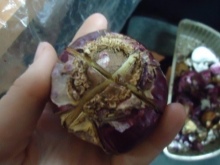
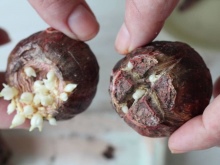
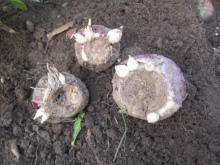
Cuttings
For this method, you need to wait until the period of ovary of peduncles begins and cut a couple of leaves at the very base. Then the leaves are treated with a solution of "Heteroauxin", which stimulates the formation of roots, and planted in a bowl with sand or perlite by 2-4 cm. Cover the container on top with a plastic bag, after which it is removed to a room with moderate lighting and high humidity and grown at a temperature of +12 - + 17 ° С for 1–1.5 months. During this time, the rudiments of the bulbs are formed on the cuttings, and after another 3 months - small roots and leaves. Such plants can be planted in the ground.
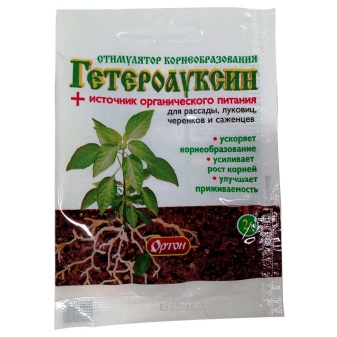

Scales
An adult onion is cut into 4 parts, disassembled into scales... The cut surfaces should be sprinkled with crushed activated carbon or treated with a fungicide. Then they take a plastic bag and perlite or a mixture of sand and peat is poured onto the bottom, where the scales are placed. The bag is inflated, tied and placed in a moderately lit place with a temperature of + 19– + 23 ° С for the first 2 months, then the temperature is lowered up to + 12– + 18 ° С and store for another 1.5 months. During this time, small bulbs will appear on the scales at the base.
Then they are removed from the bag and planted in boxes with the scales up for growing.

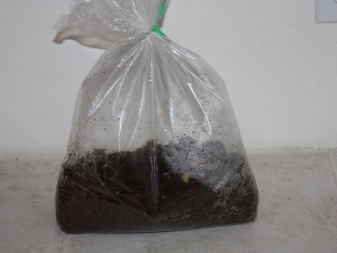
Diseases and pests
Hyacinth planted in open ground is extremely rarely affected by diseases. Most often, hothouse flowers and for distillation suffer from this. Of the reasons that can lead to trouble with the plant, there may be the following:
- initially diseased planting material;
- insufficiently drained soil and, as a result, stagnant water;
- increased acidity of the soil;
- excess or insufficient amount of fertilizers, feeding with fresh organic substances;
- preventive dressing of the bulbs has not been carried out;
- planting plants too close to each other and to other plants;
- clogged with weeds.
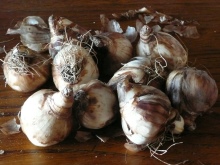
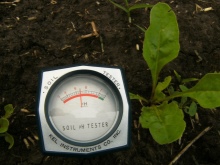
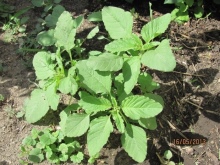
Signs of damage to a flower can be as follows:
- stunting;
- curvature of the stem;
- early wilting;
- defects in planting material;
- defects of inflorescences and buds.
The most common disease that affects the planting tubers of hyacinths is bacterial rot. In this case, the bulb becomes soft, gradually turning into mucus, exudes an extremely unpleasant putrid odor. During the growing season, attention should be paid to the appearance of stripes and spots on the stem and leaves, the presence of decaying areas, and growth retardation. In this case, the plant, together with the bulb, is disposed of, and the hole is etched with bleach. Prevention: before planting, treat the onion with a fungicide, and the ground with a 5% formalin solution or bleach.
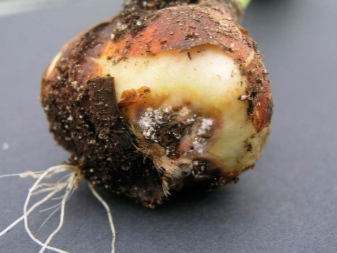
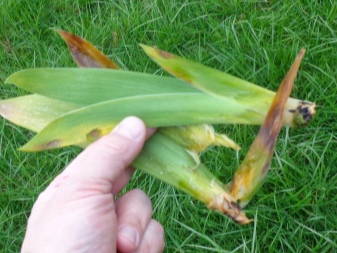
The next disease in terms of the frequency of damage is penicillosis or "Vault rot" is a fungal disease. Tubers that have been kept for a long time at temperatures below + 16 ° C at high humidity are infected. At the same time, light brown spots are found on the inner scales of the bulbs, and then completely the scales acquire a brown color, become soft. Such plants grow very slowly, poorly form a root system, characteristic drying of the tips of the roots is observed, the stems become brittle. Prevention: store the planting material in a well-ventilated area, where the humidity is not more than 70%; in case of premature regrowth of the roots, the bulbs must be planted in the ground.
Important! Often, gardeners are faced with such a problem as spontaneous falling off of inflorescences. This phenomenon is associated with an increase in root pressure due to excess moisture in the soil, early planting of bulbs or too low storage temperatures.
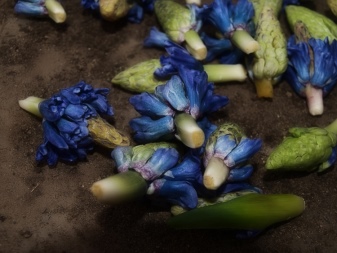
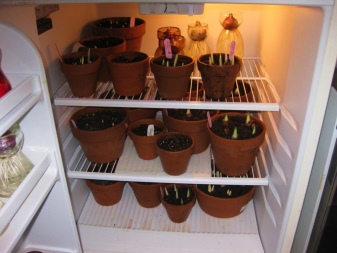
Various pests can cause great damage to hyacinths. The most popular parasite is flower fly larvae, which eat the bases of the leaves, thereby gnawing the bottoms of the plants. Effective remedies for saving flowers - "Tabazol", "Mukhoed" and "Aktara".
Much harm can also be done onion mites, the fight against which is to mulch the earth around the flowers. But the most difficult opponent is the bear. The peak of its activity falls in the month of May, when the earth warms up, and the parasites begin to eat the already planted bulbs. To combat pests, shallow pits are dug on the site, filled with manure as bait and covered with a large piece of slate or board. After 2-4 weeks, the bear should be etched out with such means as Beardrops, Boverin, Grizzly or Medvetox.


Examples in landscape design
Close planting of flowers to each other allows you to seamlessly create from hyacinths flower beds, curbs, lawns and other landscape fads... They are often paired with other spring flowers such as tulips, daffodils, primrose, or pansies. Tall buds will also work well against a backdrop of undersized crops like daisies and daisies. The variety of colors allows you to make flower beds and compositions consisting only of hyacinths. Monotonous "carpets" of these colors look no less beautiful.
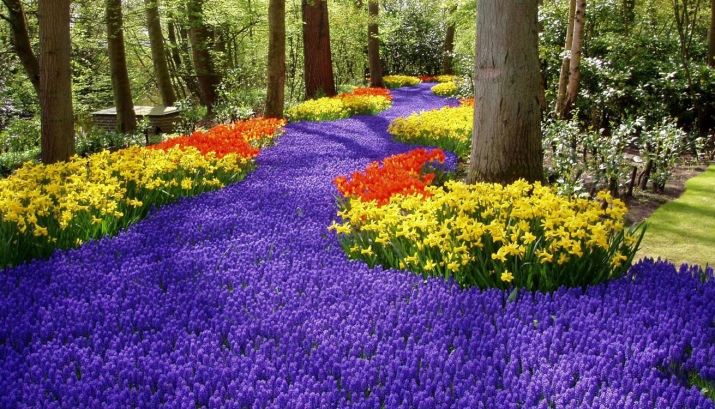
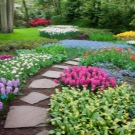


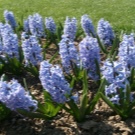
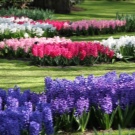
For information on how to plant hyacinths correctly, see the next video.







































































































The comment was sent successfully.